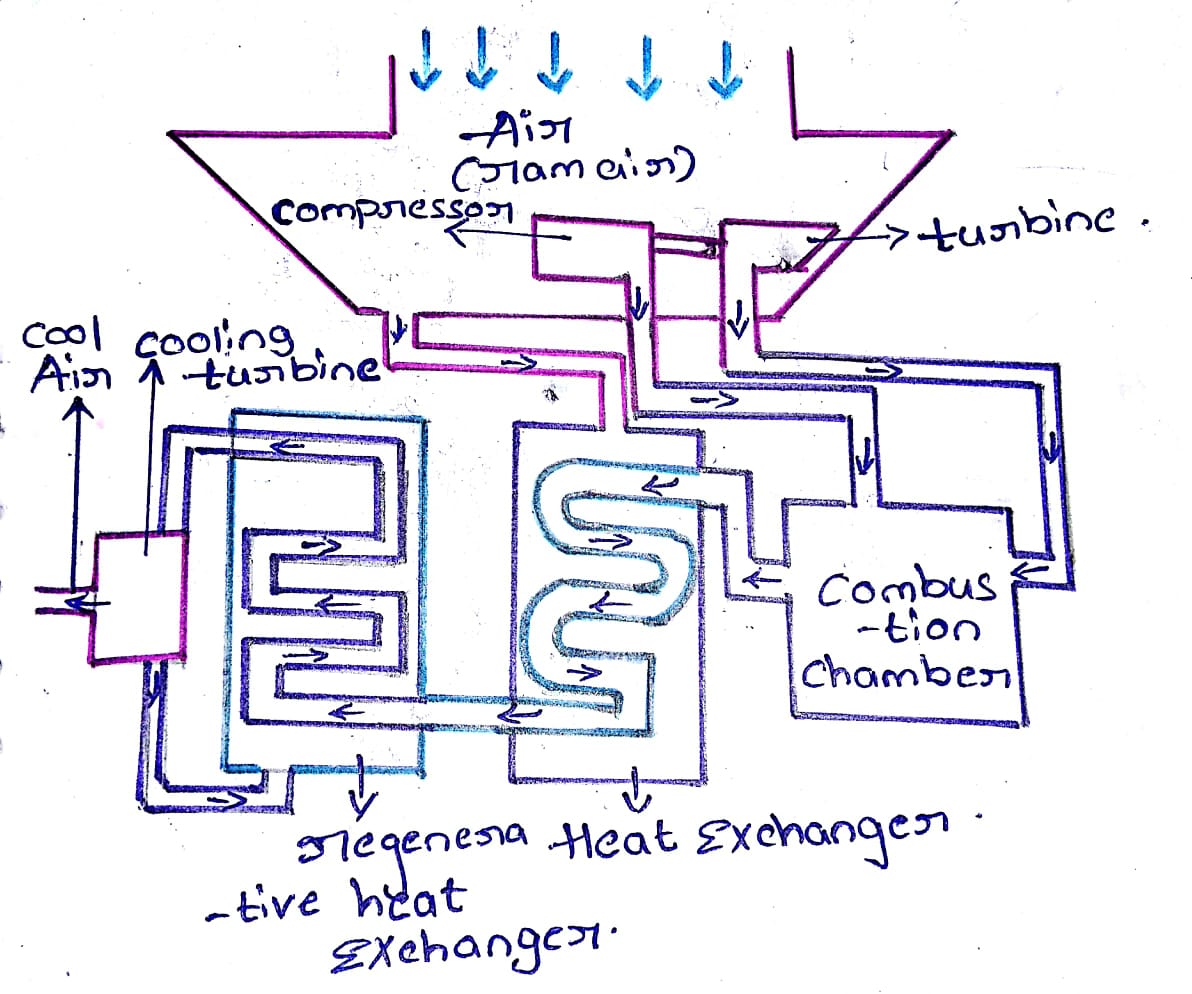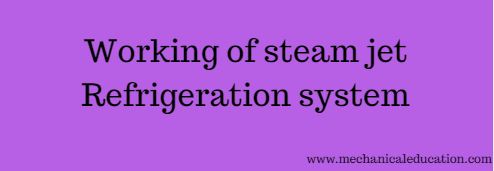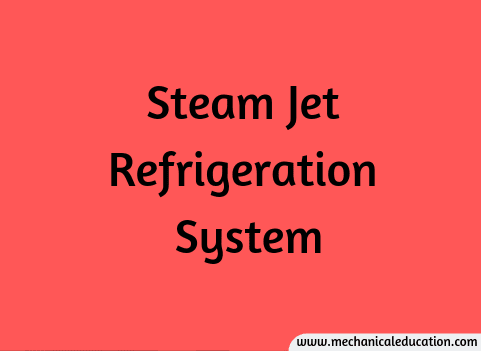Two-Stage Reciprocating Compressor with Intercooler
A two-stage reciprocating compressor with intercooler is a specific configuration of a reciprocating compressor designed to achieve higher pressure ratios while controlling the temperature of the compressed gas between stages. Here’s an overview of the working principle and features of a two-stage reciprocating compressor with intercooler:
Working Principle of Two-Stage Reciprocating Compressor
- First Compression Stage:
- In the first stage, the gas to be compressed is drawn into the cylinder during the suction stroke. The piston then compresses the gas during the compression stroke, raising its pressure. This compressed gas is then discharged.
- Intercooling:
- After the first stage, the compressed gas is directed to an intercooler. The intercooler is a heat exchanger that reduces the temperature of the gas before it enters the second compression stage. Intercooling is crucial for preventing excessive temperatures and improving overall efficiency.
- Second Compression Stage:
- The intercooled gas then enters the second compression stage, where the piston further compresses the gas to the desired discharge pressure. The compressed gas is then discharged from the second stage.
- Final Discharge:
- The final discharge pressure is achieved by the combination of the compression ratios from both stages. The cooled and compressed gas is ready for use in downstream processes or applications.
Features of a Two-Stage Reciprocating Compressor with Intercooler:
- Intercooler Design:
- The intercooler is strategically placed between the two compression stages. It cools the gas to reduce its temperature, preventing excessive heat buildup and ensuring more efficient compression in the second stage.
- Valve Mechanism:
- Reciprocating compressors typically use intake and discharge valves to control the flow of gas. The valve mechanism is designed to efficiently manage the gas flow in both the first and second stages.
- Cylinder Lubrication:
- Proper lubrication of the cylinder and piston is essential for minimizing friction and ensuring smooth operation. Lubrication systems are employed to enhance the lifespan and performance of the compressor.
- Capacity Control:
- Two-stage reciprocating compressors with intercoolers often include capacity control mechanisms to adjust the compressor’s output based on varying demand. This can include cylinder unloading or other control strategies.
- Materials and Construction:
- Compressors are constructed from materials suitable for the gases being compressed. Materials with high strength and resistance to corrosion are chosen to ensure durability and reliability.
- Motor or Engine Drive:
- Reciprocating compressors can be driven by electric motors or internal combustion engines, depending on the specific application and requirements.
Advantages of Two-Stage Reciprocating Compressor
- Higher Efficiency: Intercooling helps control temperature rise, improving the overall efficiency of the compression process.
- Suitability for High-Pressure Applications: Two-stage compression allows for higher overall pressure ratios, making it suitable for applications requiring high discharge pressures.
- Reduced Energy Consumption: The controlled temperature between stages reduces the work required for compression, contributing to lower energy consumption.
- Adaptability to Varying Loads: Capacity control mechanisms enable the compressor to adapt to varying demand conditions.
Applications of Two-Stage Reciprocating Compressor
Two-stage reciprocating compressors with intercoolers are commonly used in various industries, including:
- Natural gas processing
- Petrochemical and chemical industries
- Refrigeration systems
- Air compression for industrial processes
- High-pressure air supply for pneumatic tools
This configuration is chosen when the benefits of two-stage compression, such as improved efficiency and higher pressure ratios, are required for specific applications.
Assumptions in Two-Stage Compression with Intercooler
The analysis and design of a two-stage compression system with an intercooler involve certain assumptions to simplify the calculations and models. These assumptions provide a basis for understanding the system’s behavior and performance. Here are some common assumptions made in the analysis of a two-stage compression with an intercooler:
- Ideal Gas Behavior:
- The assumption of ideal gas behavior is often made to simplify thermodynamic calculations. It implies that the gas being compressed follows the ideal gas law, which may not perfectly represent the behavior of real gases, especially at high pressures and low temperatures.
- Adiabatic Compression and Expansion:
- The compression and expansion processes in each stage are often assumed to be adiabatic. This assumption neglects heat exchange with the surroundings during these processes. In reality, some heat exchange occurs, but this is often small enough to be neglected for simplicity.
- Isentropic Efficiency:
- Isentropic efficiency is a parameter used to account for irreversibilities in the compression and expansion processes. In the analysis of two-stage compression with an intercooler, isentropic efficiency is often assumed constant for each stage. However, the actual isentropic efficiency may vary with operating conditions.
- Constant Specific Heat Ratio (γ):
- The specific heat ratio (γ or Cp/Cv) is assumed to be constant during compression and expansion. In reality, γ may vary with temperature, especially for gases at high pressures. The assumption of a constant γ simplifies calculations but introduces some level of inaccuracy.
- Negligible Pressure Drops:
- Pressure drops across intercoolers, valves, and other components are often assumed to be negligible. In reality, there may be some pressure losses due to friction and other factors, but these are often disregarded for simplicity in initial analyses.
- Perfect Intercooling:
- Intercoolers are assumed to provide perfect cooling, meaning that the gas is cooled to the intercooler’s outlet temperature instantaneously without any losses. This assumption simplifies the analysis but may not precisely represent the performance of real intercoolers.
- Constant Heat Capacity of Intercooler Fluid:
- The heat capacity of the intercooler fluid (cooling medium) is often assumed to be constant during the cooling process. In reality, the heat capacity may vary with temperature changes, affecting the accuracy of temperature predictions.
- Steady-State Operation:
- The analysis often assumes steady-state operation, neglecting transient effects during startup or shutdown. While this simplification is common, dynamic considerations become important in practical applications.
- No Mechanical or Thermal Losses:
- Mechanical losses, such as friction in the compressor, and thermal losses, such as losses to the surroundings, are often neglected in the analysis to simplify energy balance equations.
- Neglect of Clearance Volume Effects:
- The impact of clearance volumes in reciprocating compressors may be neglected or simplified in the analysis. Clearance volume effects can be important for accurate predictions but are often excluded for simplicity.
It’s important to note that while these assumptions simplify the analysis, real-world systems may deviate from these idealizations. More detailed and sophisticated models may be required for accurate predictions in certain applications or when a higher level of precision is necessary. Engineers should carefully consider the appropriateness of these assumptions based on the specific characteristics of the system and its operating conditions.
Work Done by a Two-Stage Reciprocating compressor with Intercooler
The work done by a two-stage reciprocating compressor with an intercooler can be analyzed by considering the work done in each stage separately. The total work done by the compressor is the sum of the work done in the first stage, the work done in the second stage, and the work done in overcoming losses such as intercooler pressure drops, friction, and other inefficiencies. Here’s a general overview of the work done in each stage:
First Compression Stage:
- Work Done in the First Stage Compression (W1):
- The work done during the compression process in the first stage is given by the area under the pressure-volume (PV) diagram for that stage. For an idealized adiabatic process, the work done (W1) is calculated using the equation:
- where:
- P1 is the initial pressure in the first stage,
- V1 is the initial volume in the first stage,
- V2 is the final volume in the first stage,
- γ is the specific heat ratio.
Intercooling:
- Work Done in the Intercooler:
- The work done in the intercooler is typically negligible or assumed to be zero since intercooling is achieved without additional work input. In an idealized scenario, the intercooler cools the compressed gas at constant pressure, and the work done is zero.
Second Compression Stage:
- Work Done in the Second Stage Compression (W2):
- Similar to the first stage, the work done during the compression process in the second stage is given by the area under the pressure-volume (PV) diagram for that stage. For an idealized adiabatic process, the work done (W2) is calculated using the same equation as in the first stage
- where:
- P2 is the initial pressure in the second stage,
- V3 is the final volume in the second stage.
Total Work Done:
- Total Work Done by the Compressor (W_total):
- The total work done by the two-stage reciprocating compressor with an intercooler is the sum of the work done in the first stage, the work done in the intercooler (assumed to be zero or negligible), and the work done in the second stage.
It’s important to note that these calculations assume idealized conditions, and in practice, factors such as mechanical losses, clearance volume effects, and inefficiencies in the intercooler may affect the actual work done by the compressor. Additionally, the specific heat ratio (γ) may vary with temperature, and more detailed models may be used for greater accuracy.
Performance Characteristics of Refrigerant Reciprocating Compressor
The performance characteristics of a refrigerant reciprocating compressor are crucial factors that determine its efficiency, reliability, and suitability for specific applications. These characteristics are often presented in performance charts, diagrams, or specifications provided by the compressor manufacturer. Here are some key performance characteristics to consider:
- Capacity or Refrigeration Output:
- Definition: The capacity of the compressor is the amount of refrigerant it can compress and deliver in a given time, typically measured in terms of refrigeration tons, kilowatts, or BTU per hour.
- Influence: The capacity is a fundamental parameter influencing the sizing of the compressor for a specific application.
- COP (Coefficient of Performance):
- Definition: COP is a measure of the efficiency of the refrigeration system and is defined as the ratio of the refrigeration effect (cooling capacity) to the compressor’s input power.
- Influence: Higher COP values indicate more energy-efficient operation.
- Volumetric Efficiency:
- Definition: Volumetric efficiency is the ratio of the actual volume of refrigerant compressed by the compressor to the geometric volume swept by the piston.
- Influence: Higher volumetric efficiency is desirable, as it indicates that the compressor is effectively utilizing its swept volume to compress more refrigerant.
- Isentropic Efficiency:
- Definition: Isentropic efficiency represents how well the compressor is approaching an ideal, reversible compression process. It is the ratio of the actual work done to the isentropic work done.
- Influence: Higher isentropic efficiency implies less deviation from an ideal compression process and better overall performance.
- Displacement Volume:
- Definition: The displacement volume is the volume swept by the piston in one complete cycle of operation.
- Influence: The displacement volume is a factor in determining the overall capacity of the compressor.
- Power Consumption:
- Definition: The electrical power consumed by the compressor to perform the compression process.
- Influence: Efficient compressors should have lower power consumption for a given refrigeration output.
- Pressure Ratio:
- Definition: The ratio of the discharge pressure to the suction pressure.
- Influence: The pressure ratio affects the work done by the compressor and is an essential factor in determining compressor efficiency.
- Adiabatic Efficiency:
- Definition: Adiabatic efficiency is the ratio of the actual work done to the adiabatic work done in the compression process.
- Influence: It provides insight into how well the compressor is maintaining adiabatic conditions during compression.
- Temperature Lift:
- Definition: The temperature lift is the difference between the evaporating temperature and the condensing temperature.
- Influence: A lower temperature lift can indicate more energy-efficient operation, especially in air conditioning and refrigeration systems.
- Oil Carryover:
- Definition: The amount of lubricating oil carried over by the refrigerant into the system.
- Influence: Minimizing oil carryover is crucial to prevent oil-related issues in the refrigeration system.
- Operating Range and Control Range:
- Definition: The range of operating conditions within which the compressor can effectively operate and the range over which it can be modulated or controlled.
- Influence: Understanding the operating range is essential for selecting the right compressor for varying load conditions.
These characteristics collectively define the performance of a refrigerant reciprocating compressor and are critical considerations for engineers and system designers when selecting, sizing, and operating refrigeration and air conditioning systems. Manufacturers provide performance data and curves to help users understand how compressors behave under different operating conditions.
Frequently Asked Questions – FAQs
How is maintenance typically handled for two-stage reciprocating compressors?
Regular maintenance includes lubrication of moving parts, checking and replacing seals and valves, monitoring for leaks, and ensuring the intercooler functions effectively. Maintenance schedules depend on usage and operating conditions.
Are there any disadvantages to using a two-stage compressor?
Challenges may include higher initial costs, increased system complexity, and potential for inter-stage gas leakage. However, the benefits often outweigh these challenges in applications requiring higher pressures.
What are the advantages of using a two-stage reciprocating compressor?
Advantages include the ability to achieve higher discharge pressures, improved efficiency due to intercooling, and suitability for applications requiring compression to high pressures.
Can a two-stage reciprocating compressor handle varying load conditions?
Yes, two-stage compressors can be equipped with capacity control mechanisms to adapt to varying load conditions. These mechanisms may include suction throttling, cylinder unloading, or variable speed drives.
How is the capacity of a two-stage compressor determined?
The capacity is determined by factors such as the cylinder size, compression ratio, and operating speed. It is the amount of gas the compressor can deliver in a given time.
What are the typical applications of two-stage reciprocating compressors?
Two-stage compressors are used in applications where higher discharge pressures are required, such as in air compression for industrial processes, natural gas processing, and refrigeration systems.
How does a two-stage reciprocating compressor work?
In the first stage, the gas is compressed, and then it is cooled in the intercooler. The cooled gas then undergoes further compression in the second stage, resulting in the final discharge pressure.
What is the role of the intercooler in a two-stage compressor?
The intercooler is placed between the two compression stages to cool the compressed gas, preventing excessive temperature rise. This improves efficiency and allows for more effective compression in the second stage.
Why use a two-stage compressor instead of a single-stage compressor?
Two-stage compressors are used when higher discharge pressures are required. The compression process is divided into two stages to reduce the work done in each stage, allowing for efficient compression to higher pressures.
What is a two-stage reciprocating compressor?
A two-stage reciprocating compressor is a type of compressor that compresses gas in two stages, with an intercooler between stages to improve efficiency and control temperature rise.



